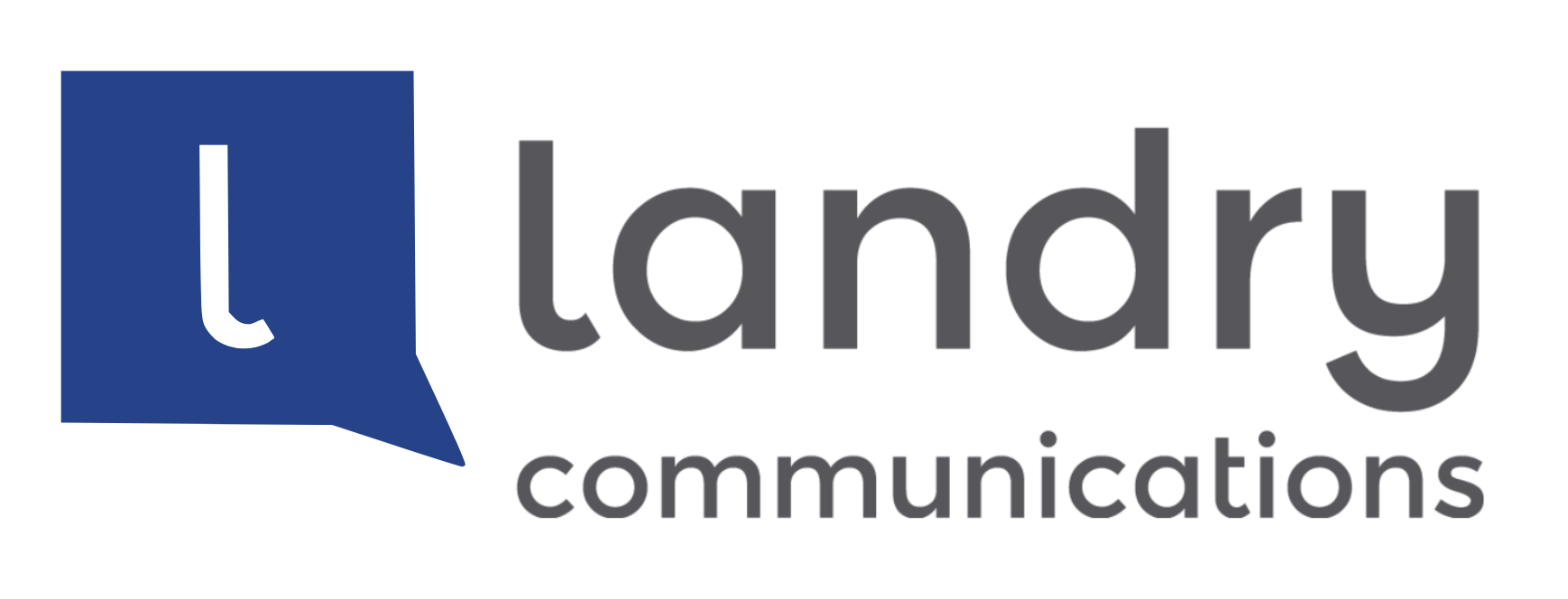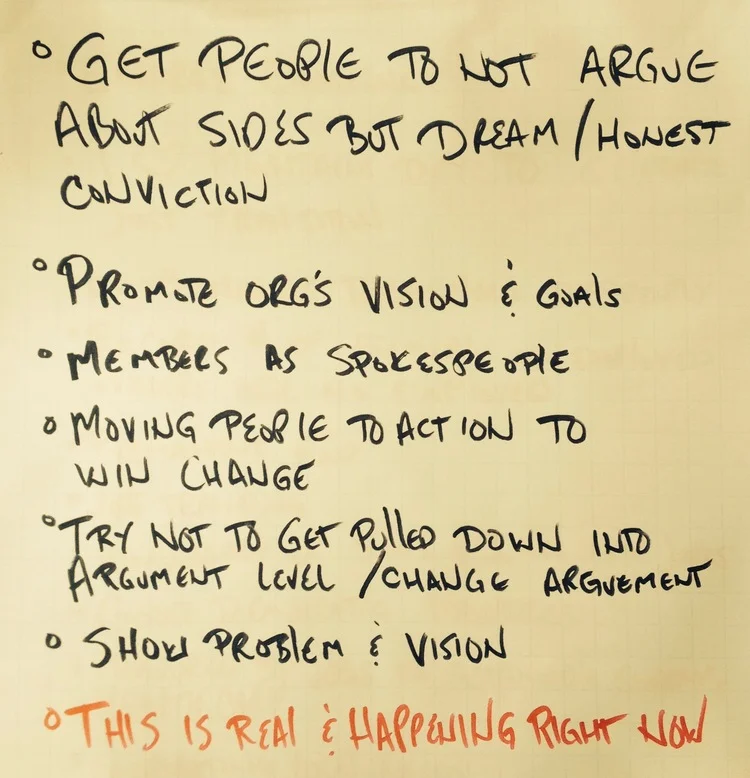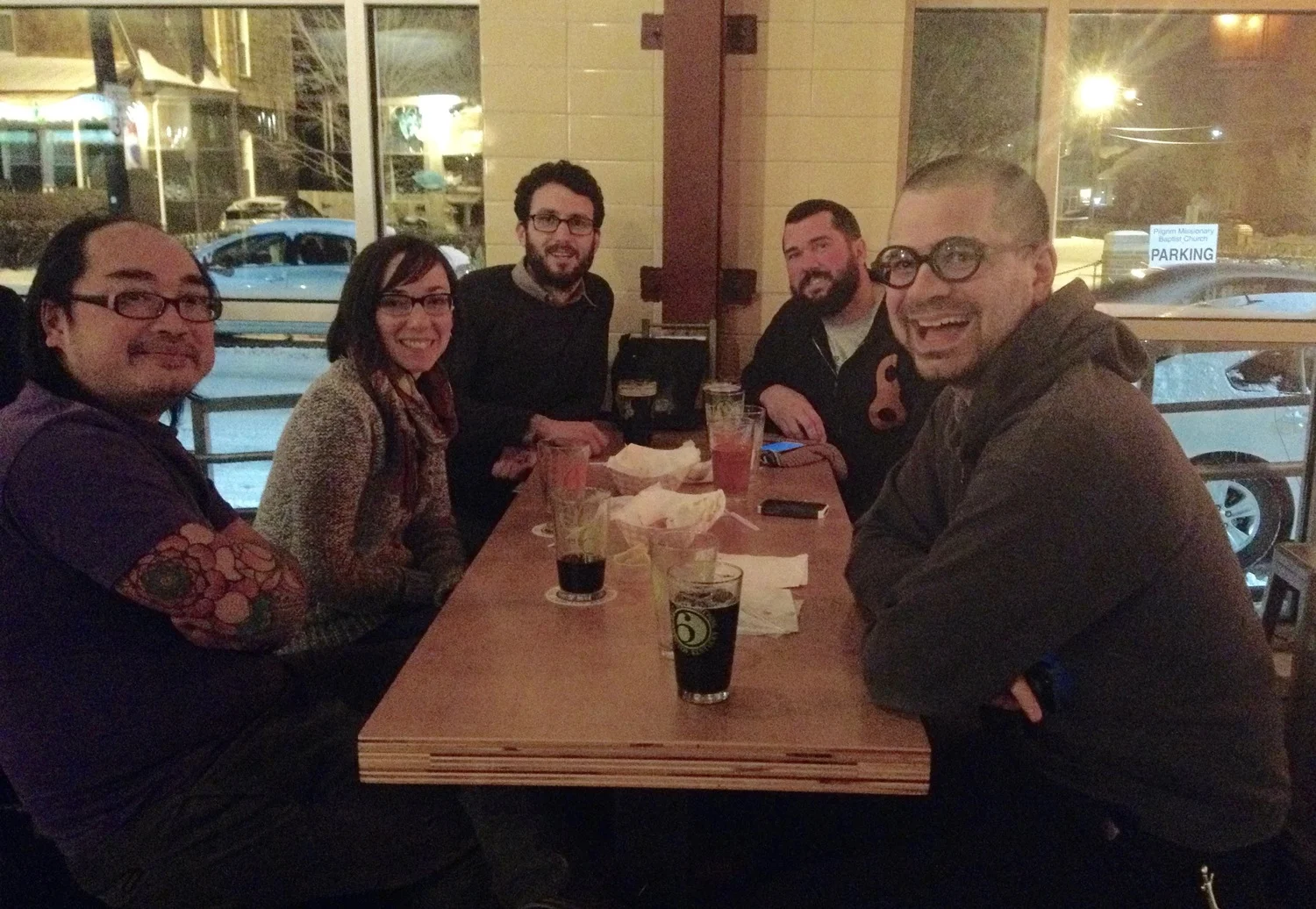Case Study: the Chorus Foundation
The Chorus Foundation had only a temporary logo and a landing page when they asked us to help them develop a comprehensive communications program.
Chorus wanted to do three things with their communications:
Promote understanding and adoption of a just transition narrative that centers social, racial, and economic justice in the transition from an extractive economy to a regenerative one.
Shift the conversation in philanthropy by helping funders see and discuss the dynamics of power and money embedded in philanthropy.
Inspire funders to invest in the grassroots work being done in frontline communities by people who have been adversely affected by the extraction economy.
We felt Chorus needed three things: a strong brand identity, a plan, and the great content.
Brand Identity
We think of an organization's identity as being the sum of several parts:
the brand promise — the reason you exist;
the brand values — which help the organization determine what it will (and will not) do, and how it will do those things; and
the brand personality.
Everything, from the design aesthetic to tone of voice, flows from these elements of brand, so it's important to get very clear about them. We did this work in four phases.
1. Discovery
At the beginning we want to suspend judgment and simply learn about the client from a variety of perspectives.
We worked (with Chorus, MACED, and KFTC to come to a better understanding of just transition work and the best ways to talk about it. We used a lot of easel paper and sticky notes.
So we began by listening, a lot. We had a series of in-person and phone conversations with the Chorus board, their grantees, and other funders. These were done in confidence so grantees, especially, would feel free to speak their minds.
We then went to Kentucky with Farhad Ebrahimi and Cuong Huang of Chorus to meet with staff members from Kentuckians for the Commonwealth (KFTC) and the Mountain Association for Community Economic Development (MACED), the two anchor organizations whose work in eastern Kentucky is being supported by Chorus. That workshop gave us very helpful insight into ways the foundation could talk about its work in ways that support the stories told by its grantees.
This work included a focus on the key audiences Chorus needed to engage with, so we could prioritize them, articulate their needs and goals, and develop a strategy for engaging them in conversation.
An ice storm in eastern Kentucky couldn't keep us from brainstorming over beer and tacos at the West 6th Brewery in Lexington after a day-long meeting with about a dozen folks from Chorus, KFTC, and MACED. There's really no substitute for meeting in person early in a project like this.
2. Synthesis
We used what we learned during discovery to help Chorus begin the process of crafting its identity. We began by working with them on a new mission statement:
The Chorus Foundation works for a just transition to a regenerative economy in the United States. We support communities on the front lines of the old, extractive economy to build new bases of political, economic, and cultural power for systemic change.
And a new vision statement:
We envision an economy in which everyone can find meaningful work; an environment in which everyone has access to clean air, clean water, and a stable climate; and a democracy in which everyone has a say.
This phase is a chance to play with what we're learning, and to test some ideas about what we're seeing.
3. Reporting
Finally, we took everything we had learned and synthesized it in a brand study that described the foundation's strategic and communications goals, their organizational identity, an analysis of their audiences, thoughts on framing, a series of top level messages, a suggested tone of voice, and implications of their identity on design and content development.
We presented our report to the Chorus board and revised it based on that conversation. The finished report became our map and guide for the work to come.
4. Design
The next step was to develop a visual identity: a logo, color palette, typefaces, and guidelines for using them. We asked the Design Action Collective of Oakland, California to work with us on this phase.
Nadia Khastagir served as project lead for Design Action. They developed several concepts, did further development of the ones Chorus liked best, then produced a final design that became the basis for the website and other materials.
Tools & content
With the identity fully developed, we turned our attention to the tools Chorus needed to tell its story.
1. Website — PowerLabs developed a custom WordPress site, but only after we had created a content plan. "Websites should be built after the content is developed, not the other way around," says Randall Smith of PowerLabs. They also created a searchable database of Chorus grants and investments.
2. Copy — We wrote the website copy, sourced images, and wrote case studies about the work of grantees. Chorus is very clear that the heroes of their story are the grantees creating change on the frontlines, and the site reflects that focus.
3. Videos — We agreed to produce a series of videos meant to help funders think about how they might use their funds to advance a just transition. The first one is an invitation to collaborate. We have since completed several more.
Strategy
With a strong brand identity, website, and content in place, we continued to work with the foundation, advising on conference presentations, media inquiries, and social media.


